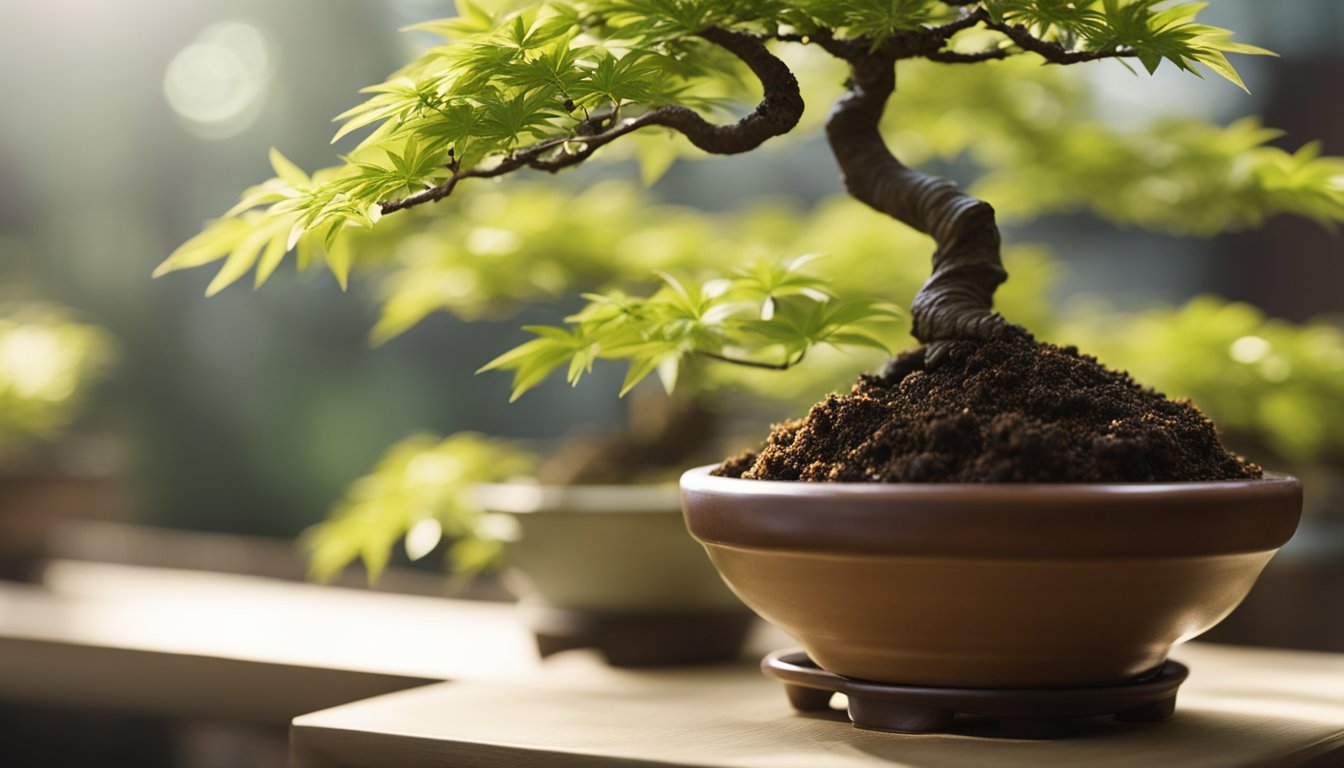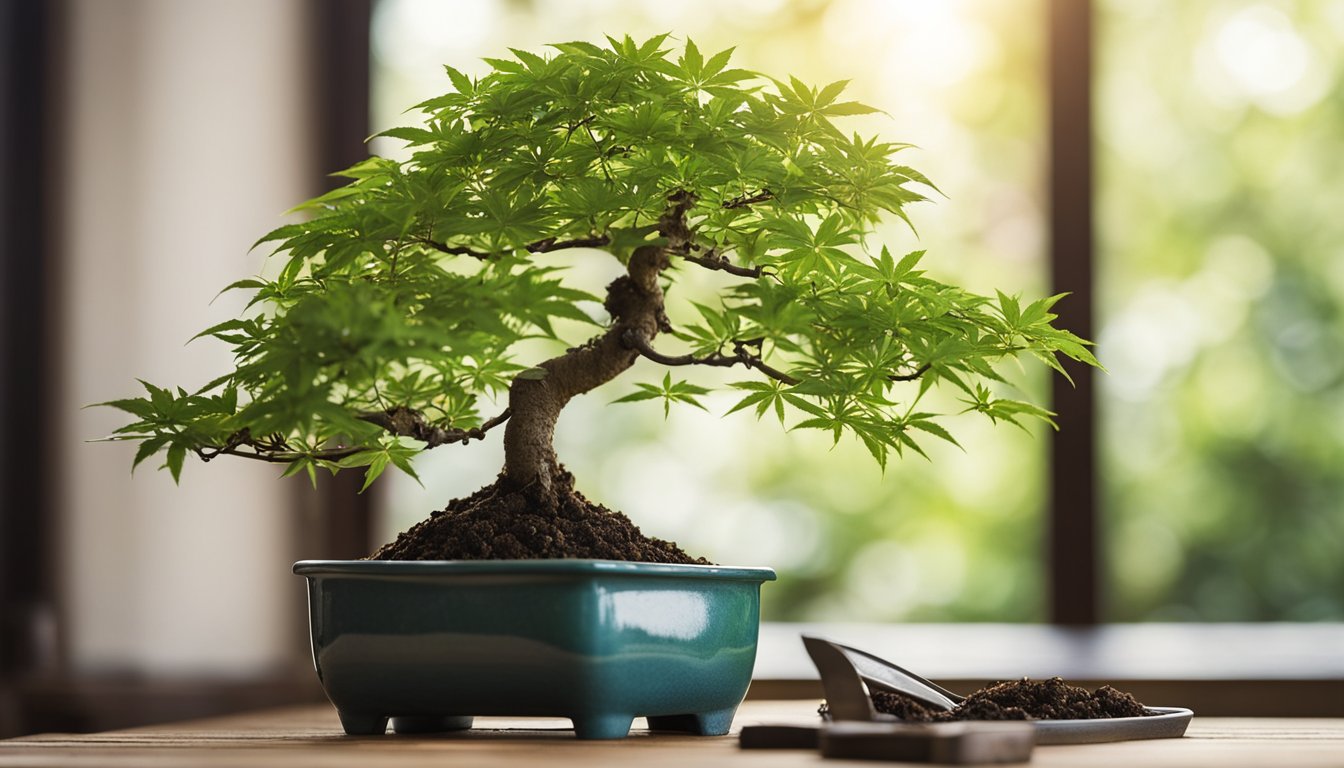Japanese maple bonsai, a quintessential miniature tree, is highly esteemed for its intricate foliage and distinct aesthetic value. Growing these bonsai from seed is both a rewarding and challenging endeavor that requires patience and attentiveness. Starting with the selection of high-quality seeds, enthusiasts can cultivate Japanese maples that offer a variety of leaf shapes and vibrant colors. Through careful pre-germination preparation, the seed's dormancy can be broken, thus aiding in successful sprouting.

Once the seeds germinate, the real art of bonsai begins. Seedlings require precise planting and cultivating to ensure sturdy growth and the desired miniature form. Each stage of development, from a sprouting seedling to a mature bonsai, demands specific care techniques. Regular pruning, wiring, and repotting are integral practices to maintain the health and appearance of the bonsai. Seasonal care is also pivotal, as Japanese maples have distinct needs throughout the year that must be met to ensure their survival and aesthetic appeal.
Key Takeaways
- Japanese maple bonsai cultivation starts with selecting viable seeds and includes detailed prep work before planting.
- Meticulous care during the seedling phase is vital for developing the desired shape and health of the tree.
- Mature bonsai require ongoing maintenance that adapts to seasonal changes for long-term growth and beauty.
Choosing the Right Japanese Maple Seeds

Selecting quality Japanese Maple seeds, also known as Acer palmatum, is essential for growing a successful bonsai. When choosing seeds, it is important to consider the specific cultivar, as different cultivars will produce trees with a variety of leaf shapes, colors, and growth habits.
A buyer should look for seeds from reputable sources to ensure genetic purity and high germination rates. The key traits to consider are:
- Viability: Fresh seeds have higher germination rates.
- Cultivar identification: Ensure the seeds are true to the named cultivar.
Quality Indicators
| Aspect | Description |
|---|---|
| Seed Size | Larger seeds tend to have more stored energy, aiding in germination. |
| Seed Color | Typically, they should have a uniform color true to their specific cultivar. |
| Seed Texture | They should feel firm to the touch and not too dry or brittle. |
The seed starting process for Japanese Maple bonsai involves stratification, a method of simulating natural winter conditions to break seed dormancy and encourage germination. Timing is critical; one should plant seeds in the late winter or early spring, providing ideal conditions for seedling growth.
In summary, careful selection and handling of Japanese Maple seeds are the first steps in cultivating a healthy, beautiful bonsai. These meticulously selected seeds, once germinated, will grow to exemplify the elegance associated with this species.
Pre-Germination Seed Preparation

Pre-germination preparation of Japanese maple seeds is essential for successful germination. The process involves specific steps of stratification and soaking to break the seeds' dormancy and promote sprouting.
Stratification Process
Stratification is a method of simulating natural cold conditions to awaken Japanese maple seeds from dormancy. These steps are crucial:
- Moisten a paper towel: Dampen, not drench, to create a suitable environment.
- Spread the seeds: Place Japanese maple seeds on half of the towel, allowing space between them.
- Fold and bag: Fold the paper towel over the seeds and place it in a sealable plastic bag.
- Label and refrigerate: Mark the bag with the date and type of seed. Place it in a refrigerator for 90 days to stratify.
During this period, ensure the paper towel remains moist but not wet. The length of time in the refrigerator should be carefully monitored; Japanese maple seeds typically require close to 90 days to complete stratification.
Soaking the Seeds
After stratification, soaking the seeds is the next step:
- Prepare warm water: Fill a container with water at about room temperature.
- Soak your seeds for 24 hours: This process helps to soften the seed coat and prepare the seeds for germination.
Observe the seeds while they soak; those that sink to the bottom are often more viable and should be chosen for planting. After 24 hours, removed the seeds from the water, they are now ready for the germination phase.
Planting and Cultivating Seedlings
The journey to a thriving Japanese maple bonsai begins with the sowing and meticulous care of the seedlings. Attention to detail in the early stages sets the foundation for healthy growth.
Sowing the Seeds
To cultivate Japanese Maples from Seed, one must start with a fresh batch of seeds. Fill a tray or small pots with a well-draining potting soil mix, designed to prevent waterlogging. Keep the soil moist but not saturated. Seeds should be evenly spaced across the surface and covered with a thin layer of soil to encourage uniform growth.
Germinate Japanese Maple Seeds
Germination of the Japanese maple seeds requires a period of cold stratification to mimic winter conditions. This involves keeping them moist and chilled for approximately 90-120 days before sowing. Once stratified, place the tray in a warm, indirect light to encourage sprouting. Indoor germination allows for better temperature and moisture control.
Seedling Care
After the seeds germinate and sprout, monitor the seedlings closely. They should remain indoors until they develop a pair of true leaves and are strong enough to withstand outdoor conditions. During this time, ensure that the Japanese Maple Bonsai from Seed receives adequate light and water, and protect them from extreme temperatures and harsh sunlight. Transplanting to larger pots can occur when the seedlings outgrow their initial trays.
Growing Mature Japanese Maple Bonsai
Successful cultivation of Japanese Maple Bonsai involves meticulous attention to pruning, soil composition, and the nutritional needs of the tree. A focus on these aspects ensures the development of a healthy, aesthetically pleasing bonsai with the characteristic deep red foliage.
Pruning and Shaping
Pruning is critical in directing the growth pattern of a Japanese Maple Bonsai's trunk and branches. This should be done with precision and a clear vision for the tree's ultimate shape. Pinching back new growth helps to maintain a compact form, and one should prune with discretion to encourage a natural-looking tree.
- Spring Pruning: Trim back new shoots to the first pair of new leaves.
- Summer Pruning: Cut back additional growth to shape the Bonsai's silhouette.
- Leaf Pruning: Every other year, leaf pruning can stimulate smaller leaf growth but must be done with care.
Repotting and Soil
Repotting is a vital part of growing a Bonsai tree, which should be done every two to three years to maintain the health of the root system.
- Best time to repot: Late winter, as the buds begin to swell.
- Soil Composition: A mix of akadama, pumice, and lava rock (1:1:1 ratio) provides ideal drainage and aeration.
- Pot selection: Choose a pot that complements the tree's stature and enhances the deep red coloration.
Watering and Fertilizing
Careful watering and fertilization are essential to nourish the Japanese Maple Bonsai and promote vibrant coloration.
- Watering: Water when the soil appears slightly dry, never allowing the soil to completely dry out.
- Fertilizing: Apply a balanced, mild fertilizer once a month during the growing season.
| Fertilizing Schedule | Details |
|---|---|
| Spring | High-nitrogen mix to support growth |
| Summer | Balanced fertilizer to sustain development |
| Autumn | Low-nitrogen mix to prepare for dormancy |
Seasonal Care and Maintenance

Caring for a Japanese Maple bonsai involves specific practices as the seasons change. In spring, one should gradually acclimate the tree to outdoor conditions. Transitioning outdoors allows it to adapt to the natural environment after winter dormancy. It is essential to protect young trees especially, from harsh elements.
During summer, the Japanese Maple bonsai requires shielding from intense sunlight. The amount of sunlight should be balanced as excessive exposure can harm the delicate leaves. Providing partial shade will preserve its summer and fall foliage while ensuring vibrant colors.
Fall is critical for this tree. One observes its renowned fall foliage as leaves transform into stunning hues. It's crucial to reduce watering during this period, allowing it to prepare for dormancy.
A simple maintenance table aligns care techniques with seasons:
| Season | Care Approach |
|---|---|
| Spring | Acclimate to outdoor temperatures, increase watering. |
| Summer | Partial shade, protect from scorching sun, monitor water needs. |
| Fall | Decrease watering, prepare for dormancy, enjoy fall foliage display. |
| Winter | Protect from extreme cold and wind, minimal watering. |
Throughout all seasons, maintain consistent care for the bonsai's health and aesthetics. Monitoring the watering needs, providing the right amount of sunlight, and ensuring appropriate soil conditions are paramount. Regular pruning maintains shape and encourages growth patterns that enhance the tree's miniature stature and natural beauty.
Frequently Asked Questions

This section addresses common queries about growing Japanese maple bonsai from seeds, providing specific guidance on techniques and care requirements.
What are the steps to effectively germinate Japanese maple bonsai seeds?
To germinate Japanese maple bonsai seeds, one must first soak the seeds in water for 24-48 hours. Next, mix the seeds with damp sand or vermiculite and refrigerate for 1-4 months to simulate winter conditions. After stratification, sow the seeds in well-draining soil and keep consistently moist until they sprout.
Can you explain the stratification process needed for Japanese maple seeds?
Stratification involves replicating the natural cold period that seeds must endure before germinating. It requires storing the seeds in a mix of moist substrate at a cold temperature of 33-39°F (1-4°C) for a period that can vary from 1 to 4 months, depending on the species and specific requirements of the seed.
What is the estimated time to grow a Japanese maple bonsai to maturity when starting from seeds?
Japanese maple bonsai can take several years to reach maturity when grown from seeds. It generally takes 1-2 years until the seedlings are strong enough to start training, and a decade or more to develop into mature bonsai with the proper care and styling.
What care tips are essential for a Japanese maple bonsai grown from seeds?
Essential care tips for Japanese maple bonsai from seeds include providing ample sunlight with partial afternoon shade, keeping the soil moist but not waterlogged, and using a well-draining bonsai soil mix. Seasonal pruning and regular fertilization specific to the growth stage of the bonsai are also critical.
Are there any specific challenges to be aware of when growing Japanese maple bonsai indoors?
Growing Japanese maple bonsai indoors can be challenging due to the need for adequate light and humidity. Potential issues include leaf scorch from direct sunlight through windows and inadequate dormancy in winter if the tree does not experience seasonal temperature changes.
What is the best soil composition for Japanese maple bonsai seedlings?
The ideal soil composition for Japanese maple bonsai seedlings is a well-draining mix that retains enough moisture to promote health but allows excess water to escape. A popular mixture is akadama, pumice, and lava rock in equal parts, which provides a balance of water retention and aeration.

